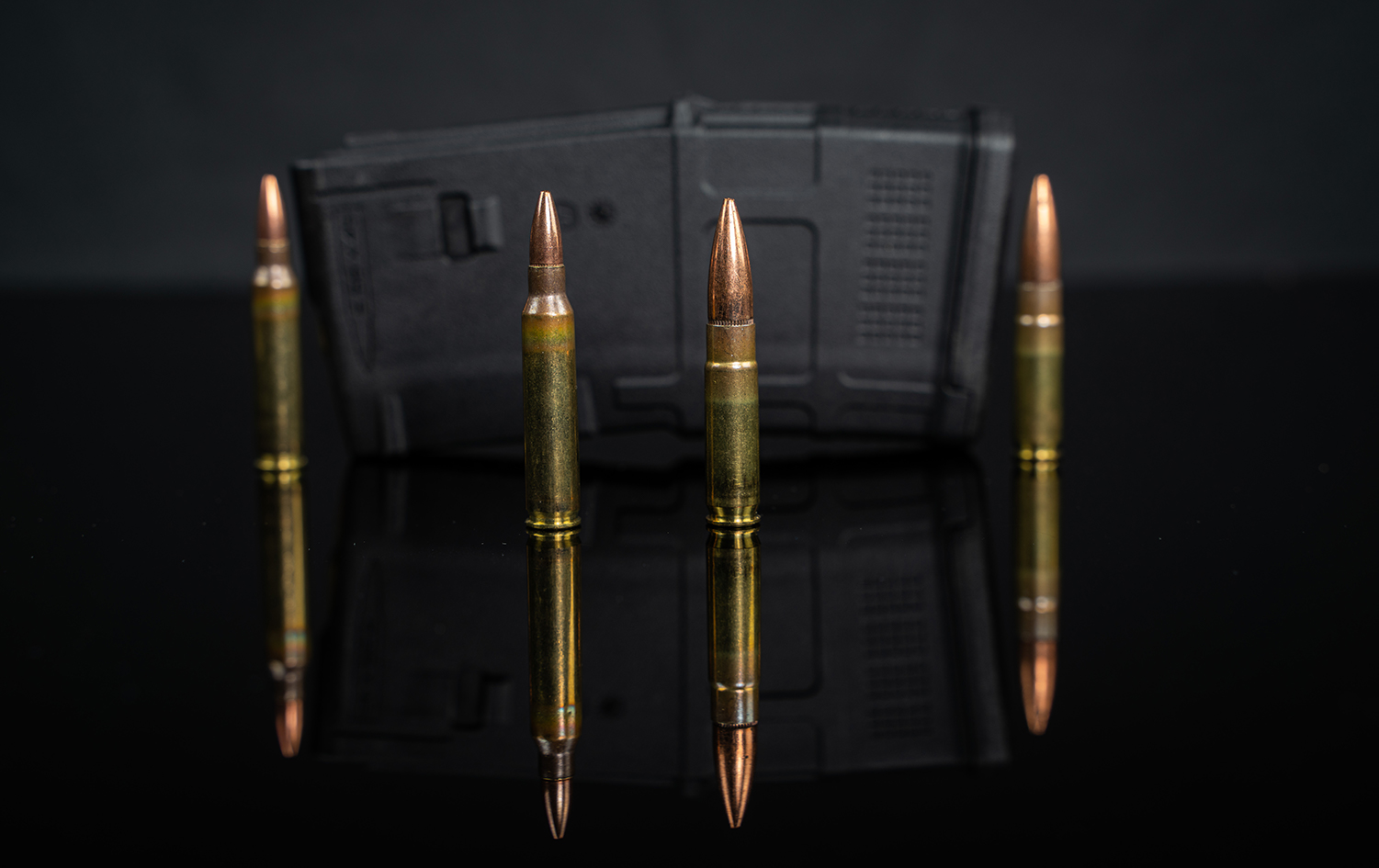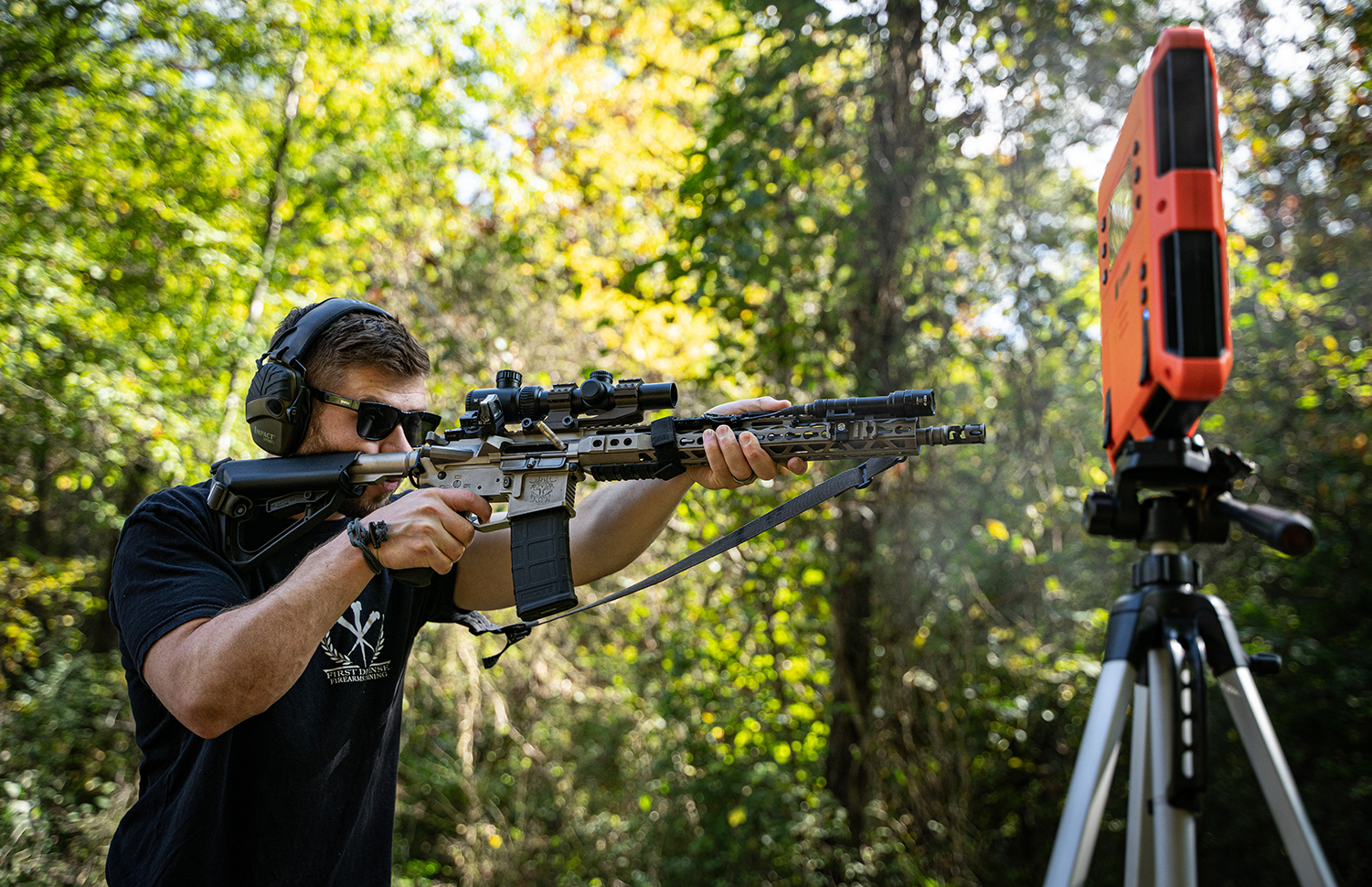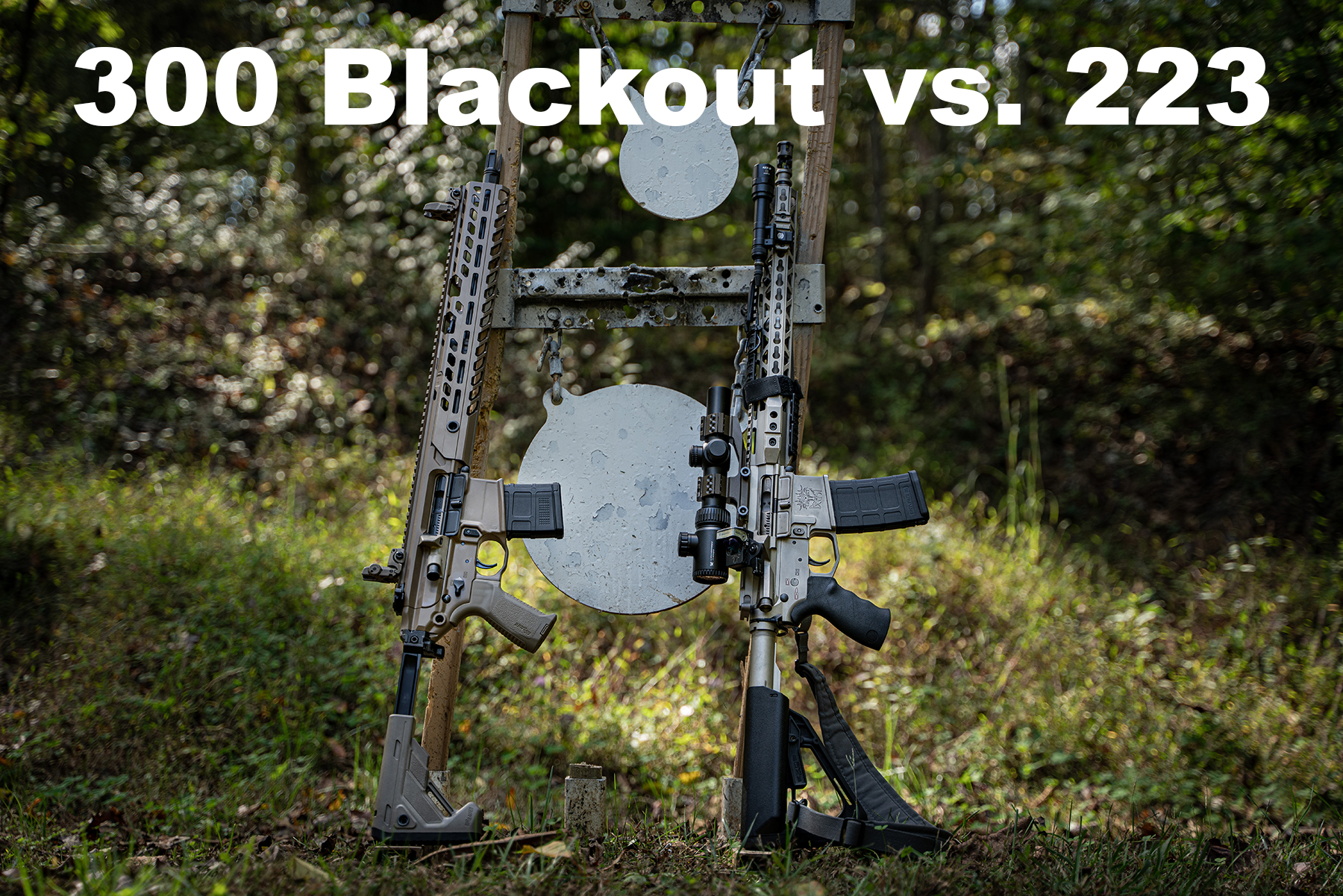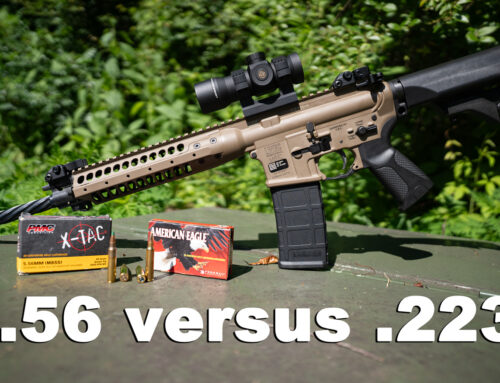Do you have an AR-15 chambered for 223 Rem? If so, all you need to run 300 AAC Blackout is a barrel change. That puts you in a perfect position to try out the two cartridges.
Will you like both equally? Maybe, if you appreciate that the 223 Rem and the 300 Blackout each have their own value to offer.
300 Blackout vs 223: Cartridge Similarities

A key difference between the 223 Rem and the 300 Blackout is their calibers. The 223 Rem has a 0.224” diameter bullet; The .30 caliber 300 Blackout has a 0.308” diameter bullet. The 223 Rem’s standard bullet weighs 55 grains, whereas a 300 Blackout bullet usually weighs at least twice that. Despite its lighter bullet, a 223 Rem cartridge is just as long as a 300 Blackout at 2.26”.
The 300 Blackout cartridge was designed to emulate the ballistic performance of the 7.62×39, but also to have a base diameter that doesn’t work an AR-15’s bolt too hard. Its casing has the same diameter as the 223 Rem from the rim until it gets to the shoulder. Because of this, you can fit as many 300 Blackout rounds in an AR magazine as you can 223 Rem. In terms of mag capacity alone, you have no reason to prefer one cartridge over the other.
Ballistic Performance

The 223 Rem usually has a 55 grain bullet. The 300 Blackout ammo world offers a little more variety, as its long bullet can accommodate more mass. Anything from 110 grains to 220 grains is fairly easy to find. A 300 Blackout round with a heavy bullet produces a subsonic muzzle velocity — good for when you would like to make less noise or are using a suppressor, but bad for making shots over 100 to 150 yards.
When you compare 223 Rem ammo with a 55 grain bullet to a 300 Blackout with 110 grains, their muzzle velocities are very different. The 223 Rem has a 3,240 fps muzzle velocity; the 300 Blackout, 2,285 fps. However, the 300 Blackout’s heavier bullet makes up for its lesser speed. Its muzzle energy is only seven less than the 223 Rem’s 1,282 ft lbs.
In short, you could do the same kind of damage with either cartridge. This is not to say that their bullets behave the same way until they find their target. The 223 Rem’s faster muzzle velocity means less bullet drop over greater distances. At 500 yards, the 300 Blackout’s bullet will drop more than twice as much as the 223 Rem’s — over 100”!
300 Blackout vs 223: Recoil
Both cartridges have very low recoil. You could control either effectively if you were to fire in rapid succession. That said, the 300 Blackout does deliver greater recoil — only barely so if you’re firing subsonic, and noticeably more if you’re firing 110 grain rounds. Still, the 300 Blackout’s kick is going remain gentle even out of a lightweight and/or short barrel rifle.
Ammo Selection and Cost
The 223 Rem has been around nearly half a century longer than the 300 Blackout. It has had a lot of time to become more popular, especially since the latter isn’t used by the Armed Forces (at least very often). As the result you can find any kind of ammo you want for 223 Rem — which isn’t to say that it’s hard to find range ammo or specialized hunting or self-defense rounds for 300 Blackout. Basically, your options aren’t limited if you exclusively stick to either.
The 223 Rem’s longer time on the market and greater popularity have certainly made it less expensive. However, a handloader who wants to even out their costs across the two cartridges has an ace up their sleeve. Reforming a 223 Rem casing into a 300 Blackout takes a little trimming, but it’s worthwhile.
Suppressed Use
The 300 Blackout beats out the 223 Rem when it comes to suppressors. A subsonic load cycles a semi-auto efficiently, and even works well with a shorter barrel. A suppressor may actually make a rifle set up for 300 Blackout run better — without one, it’s possible that the cartridge might not actuate the action correctly.
Other Uses
The 300 Blackout is a more specialized round. It excels at shorter ranges like the 7.62×39 that it’s based on, and its heavy bullet suits it better than 223 Rem for hunting big game under 150 yards. The 223 Rem, on the other hand, offers the flatter trajectory that’s optimal for hunting varmints and medium game farther out. For hunting, the rounds’ different ballistic performances are important to keep in mind.
For practical home defense, neither cartridge would underserve you. Their low recoil facilitates accurate follow-up shots, and they’re both devastating at short range. You may not find suitable self-defense ammo for 300 Blackout at your local sporting goods store, but it’s not in short supply online.
The Big Takeaway on 300 BlK vs 223
It’s simple to convert an AR to 300 Blackout. That makes forming your own opinion on the 300 Blackout vs. 223 Rem question comfortably within your means. The 223 Rem excels over longer distances, but the 300 Blackout’s benefits at shorter ranges mean that it has its own special niche. The 300 Blackout’s especial value to a suppressed weapon alone is enough to justify getting familiar with it (if you’re willing to splurge on a tax stamp). Any AR fan owes it to themself to see just how much potential a single rifle has.






Leave A Comment